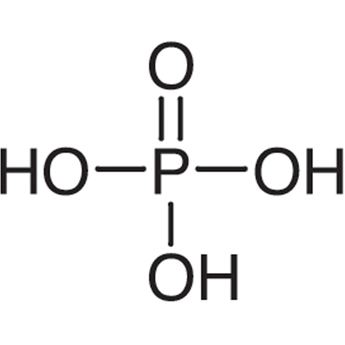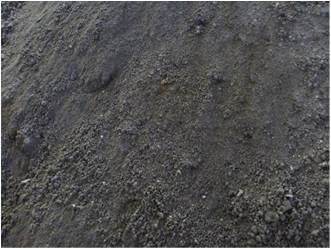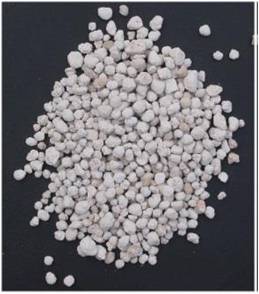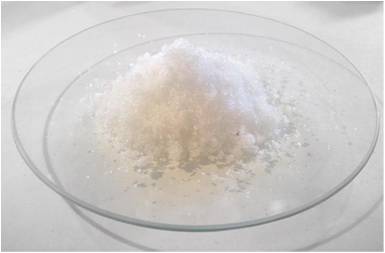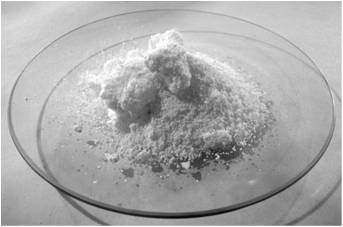- info@cfiholding.com
- SINGAPORE
Phosphorus
The roots of crops are developed by phosphate compounds. They are essential at the beginning of the season for an early maturity of the plants.
Phosphorus deficiency is not easy to see: the roots are not fully deployed and it becomes harder for the plants to get nutrients from the soil resulting of delaying the maturity.
PHOSPHORIC ACID
Phosphoric acid is produced by reacting phosphate rock with sulfuric acid. The main processes are di-hydrate and hemi-hydrate. The di-hydrate wet process is the most used process. Phosphate rock is first grinded before entering the reactor. Concentrated sulfuric acid, is diluted by recycling diluted phosphoric acid before attacking the phosphate rock. Exiting the reactor, the diluted phosphoric acid pass through a belt filter or rotary filter for an efficient phosphor-gypsum removal. The more concentrated phosphoric acid exiting the filter is flashed and directed to a thickener, for removing as much sludge as possible. The clear liquid is then concentrated by water evaporation. All the air from the plant is directed to a scrubbing system to be cleaned. A part of the resulting scrubbing liquor can be recycled back to the reactor.
MONO AMMONIUM PHOSPHATE (MAP)
Monoammonium phosphate (MAP) is a widely used source of phosphorus and nitrogen. It is made of two constituents common in the fertilizer industry and contains the most phosphorus of any common solid fertilizer.
MAP granules: The reaction for synthesis of MAP granules takes place in a chemical granulator equipped with a pipe reactor where all the chemicals are introduced. The granulation occurs via ‘the onion layering” method on a bed of small MAP granules. All the granules pass through the dryer drum, the cooler drum, the coating drum and finally to storage. Any dusty air coming through the process is treated in the scrubbers.
MAP dry crystallization: Pipe reactor, used for production of MAP through dry crystallization method, is placed at the top of the prilling tower, and fed with phosphoric acid and liquid ammonia. The MAP crystals are conditioned through the dryer drum, the cooler drum and finally to storage. Any dusty air coming through the process is treated in the scrubbers.
MAP crystals: MAP synthesis by reaction between purified phosphoric acid and ammonia is obtained in a specially designed reactive crystallizer with internal recirculation and fines destruction system allowing to produce coarse crystals. Crystals produced in the crystallizer are discharged to the hydrocyclone where the slurry is thickened and discharged to the centrifuge where crystals are separated from the mother liquor. The crystals are conditioned through the dryer drum, the cooler drum and finally to storage. Any dusty air coming through the process is treated in the scrubbers.
References:
DI AMMONIUM PHOSPHATE (DAP)
Di-Ammonium Phosphate (DAP) fertilizer is an excellent source of phosphorus and nitrogen for plant nutrition. It dissolves in soil to release plant-available phosphate and ammonium. A notable property of DAP is the alkaline pH that develops around the dissolving granule.
DAP granules: The reaction for synthesis of DAP granules takes place in a chemical granulator equipped with a pipe reactor where all the chemicals are introduced. The granulation occurs via ‘the onion layering” method on a bed of small DAP granules. All the granules pass through the dryer drum, the cooler drum, the coating drum and finally to storage. Any dusty air coming through the process is treated in the scrubbers.
DAP crystals: DAP synthesis by reaction between purified phosphoric acid and ammonia is obtained in a specially designed reactive crystallizer with internal recirculation and fines destruction system allowing to produce coarse crystals. Crystals produced in the crystallizer are discharged to the hydrocyclone where the slurry is thickened and discharged to the centrifuge where crystals are separated from the mother liquor. The crystals are conditioned through the dryer drum, the cooler drum and finally to storage. Any dusty air coming through the process is treated in the scrubbers.
References:
SINGLE SUPER PHOSPHATE (SSP)
Single Super Phosphate (SSP) is an excellent source of three nutrients phosphorus, calcium and sulfur. Since acidic soil are poor in calcium so SSP is useful in acidic soils as calcium helps increasing yields.
To produce SSP, sulfuric acid is diluted and then introduced in the reactor where phosphate rock reacts with the acid. The reactor fitted with a specific shaped agitator to ensure good phosphate rock digestion before being discharged in the den drum. In this den drum, the first step of the curing starts and the final curing is achieved in the curing area (curing time depending on the phosphate rock).
The SSP powder is then conveyed to the steam granulator. Granules are conditioned in the drum dryer, the drum cooler and then sent the coating drum.
All the dusty air from the plant is cleaned through the scrubber. In case of remaining insoluble particles, the scrubbing solution can be filtered; the filter cake can be recycled back to the granulation section and the filtered scrubbing water is used in the granulator.
References:
TRIPLE SUPER PHOSPHATE (TSP)
Triple Super Phosphate (TSP), is a phosphatic fertilizers which is used for promoting plant wellness and is often used for fertilizing leguminous crops, since they do not require nitrogen fertilization.
Phosphoric acid is directly used in the reactor (diluted by scrubbing water if necessary) to react with phosphate rock to produce TSP. The reactor is fitted with a specific shaped agitator to ensure good phosphate rock digestion before being discharged in the den drum. In this den drum, the first step of the curing starts and the final curing is achieved in the curing area (curing time depending on the phosphate rock).
The TSP powder is then conveyed to the steam granulator. Granules are conditioned in the drum dryer, the drum cooler and then sent to the coating drum.
All the dusty air from the plant is cleaned through the scrubber. In case of remaining insoluble particles, the scrubbing solution can be filtered; the filter cake can be recycled back to the granulation section and the filtered scrubbing water is used in the granulator.
References:
MONO POTASSIUM PHOSPHATE (MKP)
Mono Potassium Phosphate (MKP) is a fully water-soluble fertilizer, which is a highly efficient source of phosphorus and potassium for plants when nitrogen fertilization should be limited.
MKP is produced by reaction of a solution of potassium hydroxide with phosphoric acid; both reaction and crystallization take place in the crystallizer.
Potassium hydroxide and phosphoric acid are preheated and then injected to the bottom of the DTB crystallizer, react together and form MKP. The MKP crystals in slurry containing are separated in the centrifuge (pusher type). The crystals are conditioned through the dryer drum, the cooler drum and finally to storage. Any dusty air coming through the process is treated in the scrubbers.
DI POTASSIUM PHOSPHATE (DKP)
Di Potassium Phosphate (DKP) is highly soluble fertilizer, with low content of sodium and chloride, which makes it an optimal fertilizer at the final stages of the crop growing cycle and also for foliar nutrition. DKP also suits greenhouse crops and hydroponics.
DKP is produced by reaction of a solution of potassium hydroxide with phosphoric acid; both reaction and crystallization take place in the crystallizer.
Potassium hydroxide and phosphoric acid are preheated and then injected to the bottom of the FC crystallizer, react together and form DKP. The DKP crystals in slurry containing are separated in the centrifuge (pusher type). The crystals are conditioned through the dryer drum, the cooler drum and finally to storage. Any dusty air coming through the process is treated in the scrubbers.
AMMONIUM PHOSPHATE-SULFATE (APS)
Ammonium Phosphate Sulfate (APS) is the most preferred fertilizer in drill-sown areas. The combination of sulfur along with N & P, helps in improving chlorophyll content and enzymatic activities in the plants thereby resulting in improved productivity and quality of farm produce.
APS is produced by chemical granulation process. Raw materials are sent to the chemical granulator in which an installed pipe reactor receives liquid ammonia, phosphoric acid and sulfuric acid jointly with scrubbing water. In the pipe reactor, the production of high quality MAP-DAP-AS slurry is achieved. This mixture is sprayed on the solid raw materials and the granulation begins. This technology does not need a pre-neutralizer and can use either solid (granules or prills) or liquid urea in the granulator.
Exiting the granulator, granules are directed to the dryer drum, the pre-cooler, and the fluidized bed cooler for conditioning and then coated in the coater. Dusty air generated during the process is treated the scrubber before being released to atmosphere.

